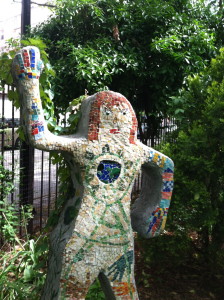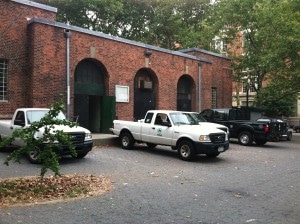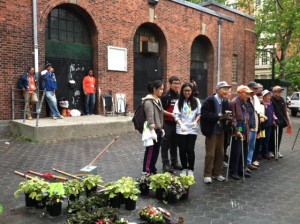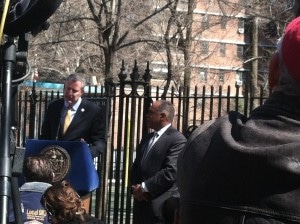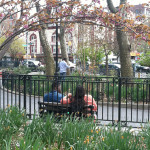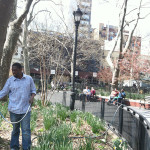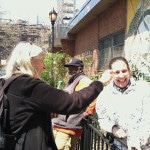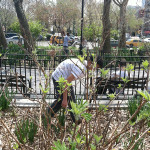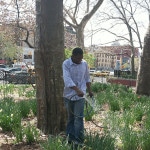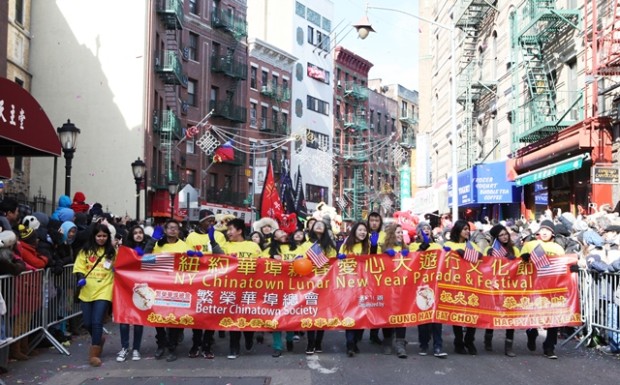
Sara Roosevelt Park Community Coalition
https://sdrpc.mkgarden.org/
Good afternoon. My name is K Webster, President of the Sara Roosevelt Park Community Coalition.
The Parks Department has been our active partner in caring for this essential open space in our crowded and diverse neighborhoods. We appreciate Partnership for Parks for their ongoing support of this alliance. They provide steady guidance for the Coalition’s stewardship in this park.
Parks need the community working in them: deciding, gardening, and creating in collaboration with the Parks Department. Not outside the fence waiting to be “served”. We want a dynamic, ongoing relationship where we come to the table with common goals, disagreements, and with each group’s unique expertise. We get smarter together.
Our parks and open spaces are the country homes, science labs, nature preserves, places of play, respite and community gathering for most city dwellers. They keep life more alive here.
Therefore our parks need dedicated, assured funding commensurate with these vital roles and funding for an expanded role we think they need to play going forward.
We need a living wage for our underpaid WEP workers. We can’t maintain our parks on the backs of poor people.
But, urgently, climate mitigation, resiliency and recovery must now be part of the core mission of Parks.
We need innovative and decisive actions to meet the challenges of climate change and the present lack of adequate financial resources. We need to build a cadre of skilled and savvy citizen stewards and Park’s workers to meet both those challenges.
Every park can become a model of sustainable practices: from solar lighting to recycling. They can be beacons of information about bird and bee habitat, indigenous plantings, and water reclamation. Our parks buildings can provide sites of learning on climate resiliency, sites of recovery, solar-powered charging stations, bike repair shops and think-tanks for technologies that show a way forward. We can educate our city on their stake in their own environment.
Our city also has a global reach. We can join efforts in earnest to shift the balance on climate disruption. Military leaders, 97% of scientists, along with us tree huggers all agree: we are at a tipping point.
This will be challenging and we can do it. And there really isn’t any other choice.
Thank you for your time.
K Webster
President
Sara Roosevelt Park Coalition
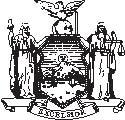
Testimony of State Senator Daniel Squadron to New York City Council Committee on Parks and Recreation on the Fiscal 2015 Preliminary Budget
March 27, 2014
My name is Daniel Squadron and I represent the 26th District in the New York State Senate. My district includes the Manhattan neighborhoods of Tribeca, Battery Park City, the Lower East Side, Chinatown, the Financial District, Little Italy, SoHo and the East Village and the Brooklyn neighborhoods of Greenpoint, Williamsburg, Vinegar Hill, DUMBO, Fulton Ferry, Brooklyn Heights, Cobble Hill, Carroll Gardens and Gowanus. Thank you for the opportunity to testify at this hearing on parks funding.
Let me begin by saying that the conversation today is incomplete. It focuses on only one piece of the overall spending on our City’s parks. This budget does not include the allocation of the millions of dollars that third party parks advocates and conservancies will raise and spend in parks around the City this year. Nor does it include the individual allotments and grants that community members lobby elected officials to spend from their so-called discretionary funds.
Introduction 154, sponsored by Council Members Lander and Levine, would bring increased openness and transparency to parks funding by requiring the Parks Commissioner to identify each source of funding for parks maintenance and capital projects, among other things.
Today’s patchwork model for funding our city’s parks, which are as vital to our civic infrastructure as oxygen is to our lungs, is wholly and completely inadequate for three reasons: underfunding by the City; lack of a dedicated capital budget; and the unintended consequences of conservancies.
For New Yorkers who are fortunate enough to live near one of our marquee parks, it’s probably not obvious that the Parks budget is inadequate. Those parks are doing better than ever, and it would be easy to believe that the Parks budget has increased based on those parks alone. But a visit to St. Mary’s Park in Mott Haven, or Flushing Meadows Park, or Sara Roosevelt Park in my district exposes the vast divide in Parks upkeep around our city.
In 1986, the Parks Department represented .86 percent of the city’s overall spending. During the 2001 election season, parks advocates organized a major campaign to push for one percent of the city’s budget to be dedicated to parks. We never got there and the campaign dissipated. Today, the Parks Department receives a paltry .52 percent of the city’s $73.7 billion budget. That percentage has been stagnant for years.
The fact is that because our marquee parks are doing so well, the momentum for doing something about the lack of funding for other parks around the city dried up. Fourteen years ago there was greater outcry about a Parks budget that is identical as a fraction of the city’s budget to what it is today. The biggest difference between then and now is the increase in dollars that generous conservancies spend to maintain and improve a small number of fortunate parks in affluent neighborhoods.
Until every park, playground, and plaza in the five boroughs is maintained to a state of good repair, this budget will continue to be inadequate.
The fact that the Parks Department has no discretionary capital budget of its own is a gaping hole in the funding structure. Without a capital program, Parks is left to grovel for member items and philanthropic donations to meet what should be considered basic needs. Instead of a system-wide evaluation, individual elected officials and philanthropists are left to make disconnected decisions about their neighborhood or their parks. New Yorkers for Parks has said the lack of capital budget creates inefficiencies, and I could not agree more.
In order to create more equitable funding within parks and change the current budget dynamic, I have put forward a proposal to create a Neighborhood Parks Alliance that would form partnerships between well-financed conservancies and parks that are most in need. A contributing park would commit a portion of its conservancy’s budget to a member park, defined as City parks rated as unacceptable in the prior two years. Those parks would become members by establishing their own conservancy group and receiving commitments from the Parks Department and local Council members to at least maintain current government funding levels.
A Neighborhood Parks Alliance certainly would not supplant the need for additional City and State support for parks. Those of us with budgetary responsibilities at the City and State must never forget that.
In fact, I believe a NPA would lead change the game for parks funding. The success of conservancies has inadvertently contributed to the problem. Let me be clear: conservancies have arisen to fill a gap in public funding of our parks, and it is true that they do tremendously good work.
Because we know that conservancies will raise the funds to keep our major parks in a state of good repair, the City does not dedicate the funds necessary to maintain its parks. Instead, the polished jewels sparkle while around them, the system falls into disrepair. This year, we have finally turned the conversation toward the role of conservancies, and that is a good thing. Private donations have become an integral part of financing our parks. We should continue to encourage these philanthropic donations.
The fact that we are having an active discussion about the role of conservancies means we are making progress. But this conversation must actually lead to two things that will fundamentally change the game for parks all across the city: a greater connection between all the parks in the system and more funding. This is a goal we all share.
We are one city. We all want and need great parks. We need a budget that will create access to great parks for all New Yorkers and remedy the vast disparity between the jewels in our parks system and those in desperate need of repair. A Neighborhood Parks Alliance cannot erase those disparities overnight, or even in a year, but it will cause us to dramatically rethink the funding for such a large public good. Its creation is an important step in reducing a major source of inequality in our city.
Again, I thank you very much for the opportunity to testify this afternoon.

